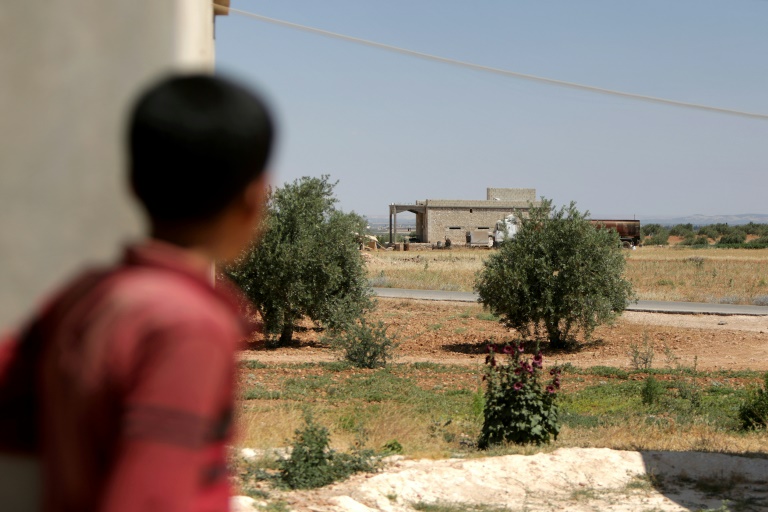US airborne raid nets top IS operative in Syria

A boy looks at a building where US coalition forces conducted an overnight airborne operation to capture an Islamic State group bombmaker, in the village of Hmeirah in the north of Syria’s Aleppo province on June 16, 2022.
Beirut – US coalition forces said they captured a senior Islamic State group bomb maker in an airborne operation before dawn Thursday in northern Syria.
A war monitor and AFP correspondents said military helicopters touched down for only a few minutes in a village in an area controlled by Turkish-backed rebel groups.
The US-led coalition dedicated to battling the jihadist group in the region did not name the target.
“The captured individual is an experienced bomb maker and operational facilitator who became one of the top leaders of Daesh’s Syrian branch,” it said, using another name for IS.
Such operations by US forces are rare in areas of northwestern Syria that are under the control of Turkish-backed rebels and non-IS jihadist groups.
The latest previously was a raid in early February that led to the death of the group’s leader Abu Ibrahim al-Qurashi, who detonated a bomb vest to avoid capture.
The Syrian Observatory for Human Rights, a war monitoring group with a vast network of sources on the ground, could not confirm the identity of the IS operative captured on Thursday.
Observatory head Rami Abdel Rahman told AFP that two helicopters landed in Hmeirah and took off seven minutes later, adding that only a few shots were fired during the operation.
“The US operation was quick and smooth,” he said. “It took place in the village of Hmeirah, northeast of the city of Aleppo and four kilometres (2.5 miles) from the Turkish border.”
The coalition said in its statement that “the mission was meticulously planned to minimise the risk of collateral damage, particularly any potential harm to civilians.
“There were no civilians harmed during the operation nor any damage to coalition aircraft or assets.”
– Desert hideouts –
After IS lost its last territory following a military onslaught backed by the US-led coalition in March 2019, its remnants in Syria mostly retreated into desert hideouts.
IS cells have since ambushed Kurdish-led forces and Syrian government or allied forces, also carrying out similar attacks in Iraq.
The Islamic State group’s top leaders however often take cover in areas controlled by other forces and where its own fighters are not active.
Qurashi’s notorious predecessor, Abu Bakr al-Baghdadi, was also killed in a US special forces raid in northwestern Syria, far from IS’s area of operations.
Since Qurashi’s death, the group has kept spreading its message online, arguing that the West is weakened while in the Ukraine war “the crusaders (are) fighting each other”.
Little is known about new leader Abu Hasan al-Hashemi al-Qurashi, the jihadist group’s third chief since its inception.
Media reports that he was captured in Istanbul last month were never confirmed, with a Turkish official only telling AFP that a senior but unidentified IS member had been detained.
Observers have long feared a resurgence of IS in the badlands that straddle the Iraqi-Syrian border and formed the heart of the group’s once sprawling proto-state.
Yet with constant coalition pressure on its leadership and its sources of financing, the jihadist group still has no fixed positions in either country and the intensity of its attacks has remained largely unchanged since 2019.
